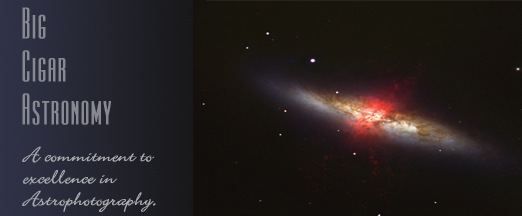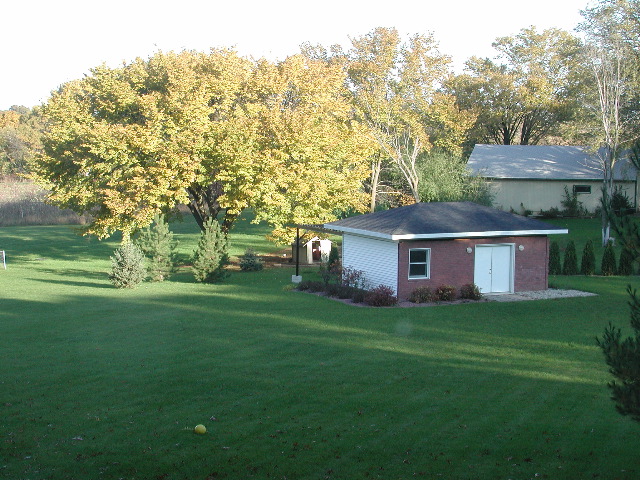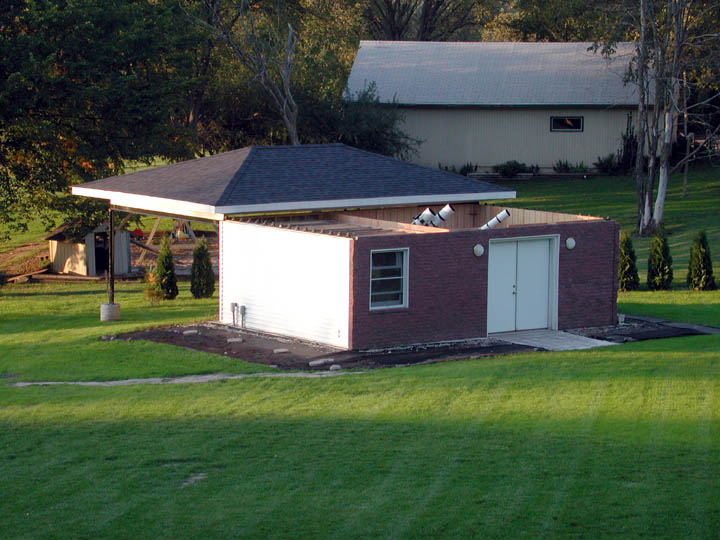

Observatory

Landscping is making this place look like a home away from home!

Showing the roof opened and telescopes at the ready. (before the landscaping was finished)
The observatory is finished!
The main observatory is 16' x 16' with a 16' x 8' control room connected. The roof covers both the main observatory room as well as the control room. The control room will have a secondary sub- roof that will be located under the main roof. This will keep us warm in the winter and protected from mosquitoes in the summer. The entire roof, all 24' x 16' will slide open to reveal the night sky to the telescopes that will reside within.
The roof is a hip roof design and is moved by two 3,500 lb. rated automotive winches. Two 190 AmpHour Deep Cycle Batteries power the winches. The batteries are on a constant trickle charge.
The building is constructed of a steel I-Beam frame around which the 2x6 outer walls are attached. The floor is poured concrete with thicknesses varying between 6" in the center and increasing to 12" out toward the walls.
The piers are 11" diameter schedule 40 steel pipe with a wall thickness of approximately 1/4". They are encased in 36" diameter sonotubes filled with concrete that extends 6 feet into the ground. Isolation of the piers to the main floor is provided with a very thick layer (approximately 18") of sand compacted, the sonotube and an extra layer of 2" thick high density foam wrapped around the sonotubes prior to pouring the main floor. Isolation is absolute. We tested this by two methods. Striking a large hammer on the concrete that surrounds the pier resulted in the pier ringing. Striking the hammer just outside the ring of the pier on the concrete floor resulted in no ringing of the pier. We have also jumped up and down repeatedly during both observing and imaging and cannot see any vibration effect whatsoever.
The office/control room is where we perform the remote operation of the telescopes and CCD cameras. We currently have 2 computers in the office.
The piers hold the Astro-Physics mounts which currently include a 1200 GTO and a 900 GTO. We will no longer have to go through the tedious process of setting up, polar aligning and tearing down each night. This will allow us to be much more productive in capturing the splendors of the universe on both film and CCD.
Click here to see construction pictures.